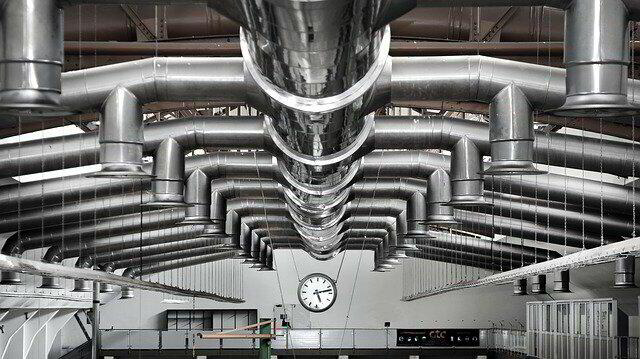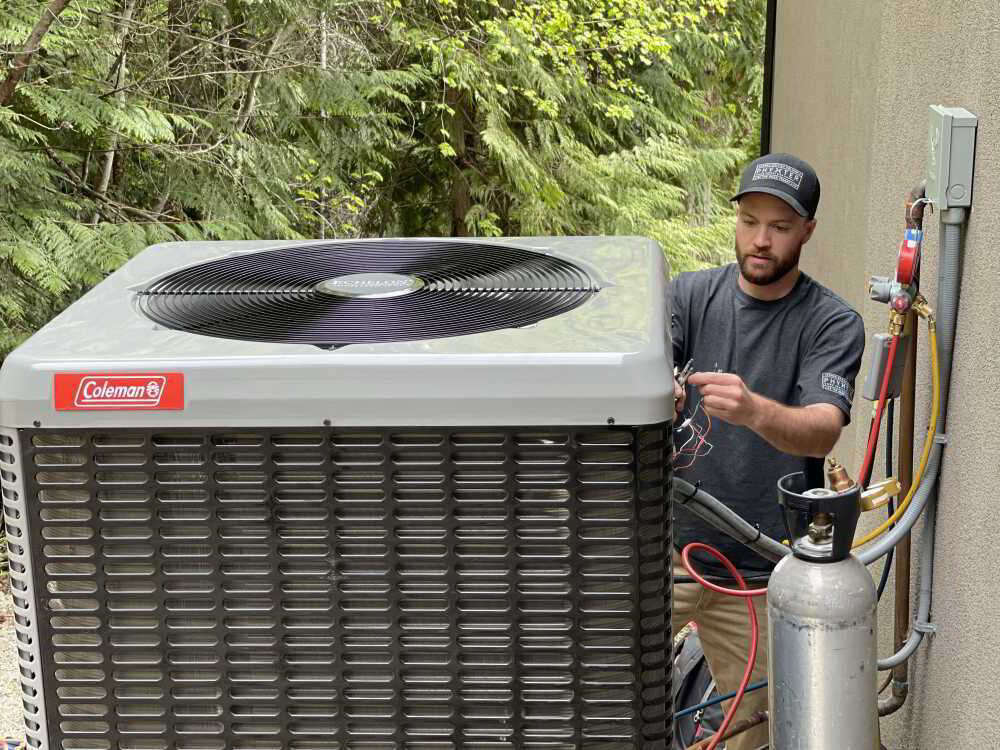What Does HVAC Mean, and What’s the Difference between HVAC and AC?
In the air conditioning industry, the term HVAC is generally used instead of AC. This is because HVAC literally means Heating, Ventilation, and Air Conditioning, whereas AC simply refers to air conditioning.
AC is only a subset of HVAC systems. AC relates only to air conditioning systems designed to cool the air in your home or business. HVAC systems include all categories that influence heating, cooling, air quality, and humidity control within an enclosed area. This also includes ventilation systems such as ductwork that moves the controlled air around.
AC, under the category of cooling, refers to various cooling systems such as central AC, Ductless AC, window air conditioning units, portable units, hybrid AC, air source, water source, and geothermal heat pumps.
Companies tend to use these two terms interchangeably because many air conditioning repair services deal with all types of HVAC systems. So, let’s break down the H.V.A.C…
Table of Contents
What does the “H” stand for? – Heating!

Although the “H” stands for heating, you need to know that not all HVAC techs are certified to work on all types and sizes of heating equipment.
For example, under the term heating, you could include forced-air furnaces that could use either electricity, propane, natural gas, oil, or wood… and almost each of those requires their own trade license to work on.
Don’t forget heat pumps, they are also used to heat homes.
We haven’t even discussed size yet, and size matters when it comes to heating licenses.
Within the heating industry, there are three main areas to work in; residential (small equipment), commercial (medium-sized equipment), and industrial (the big stuff).
Most tradespeople start by getting licensed for residential and then working their way up to commercial and industrial licenses.
But all that means is that your career is a little more protected because of your ability to work on anything… believe me, whether you’re in residential or industrial heating, you can make a great living.
How about the “V” … get your mind out of the gutter! – It’s Ventilation!

Now I personally am certified for everything from residential to industrial.
Still, I have never really worked on ventilation, not because I don’t want to, just because it’s a specialty.
Within ventilation, you could be working on something as small as a residential bathroom exhaust fan, a commercial kitchen exhaust hood, to fresh air ventilation for an underground mine (big bucks to be made in this area if you’re good at it!).
Ventilation is how fresh air is sourced and brought into the home from the outside environment.
Once the air is processed through the air handler, it is distributed throughout the home.
This includes returning the air back into the heating and cooling process.
Ventilation can be carried out in one of two ways.
Natural Ventilation
Natural ventilation is how your home is ventilated without specialized equipment, construction, or add-ons and is the natural process of how air makes its way in and out of your home.
This is present in most homes and more prevalent in older homes where building codes of efficiency were less strict.
Air can move into your home through the entry and exit points in the building.
Cracks and other vents can also ventilate your home naturally.
So when air from the outside environment moves through your doors, windows, cracks, and vents of its own accord, that’s called natural ventilation.
When is this most useful? Natural air exchanges like this are necessary for replenishing your oxygen levels.
It’s also helpful in removing excess moisture and odors from your home and filtering out carbon dioxide.
Mechanical Ventilation
Next, we have mechanical ventilation. This system uses mechanical systems to transport air both into and out of the building.
Again, old-fashioned architecture made it, so most buildings had ready access to natural ventilation.
Most residential, commercial and industrial buildings use windows, doors, and other entry and exit points to bring natural air from the outside environment indoors.
Modern architecture in 2022 is different, however.
To help comply with newer codes regarding energy efficiency, contemporary builders opt for creating much more tightly sealed homes to comply with these codes such as LEED (Leadership in Energy and Environmental Design).
These include more of a focus on providing acceptable indoor air quality.
This design philosophy makes mechanical ventilation much more critical in buildings with newer HVAC systems.
Energy-efficient homes have a few essential design elements in common: a tightly sealed and well control thermal envelope, controlled mechanical ventilation, appropriately sized high-efficiency heating, and cooling systems, along with energy-efficient windows, doors, and appliances.
Outside air enters the building using a specially designed air inlet.
Air initially enters via the air filter and is then routed to different parts of the building where it will be most needed through ductwork.
Also, mechanical ventilation helps remove dirt, dust allergens, and other particulates.
Additionally, this air is used for heating, cooling, and removing excess humidity, thus creating a comfortable environment that improves your indoor air quality.
Once this air has been filtered and controlled to a specific temperature and circulated throughout your home, it is returned home through a network of ducts.
In the case of a central air conditioner, it is returned to the indoor air handler to start the process again.
And now my favorite part… the “AC”

AC, of course, stands for air conditioning, and there are three main types to know about.
The first and most common air conditioning system is the window air conditioning system.
The next most popular is central air conditioning, the third is a ductless mini-split air conditioner, and finally, the portable air conditioning unit.
There are four types of cooling equipment if you want to consider the swamp cooler (otherwise known as evaporative cooling).
Heat pumps are included in both heating and cooling as their function is to provide both. You can learn more about how heat pumps work here.
Sometimes HVAC is referred to as HVACR. I guess I forgot to mention it earlier…..
Alright, so the “R” stands for Refrigeration.

Refrigeration uses the same tools, licensing (outside of some specialties like Ammonia Refrigeration Systems) and processes, but it uses them for lower temperature applications like refrigerators, walk-in coolers, walk-in freezers, and many more applications related to keeping products at a lower temperature.
If you’d like to learn more about refrigeration, you should reach out to your local trades school or vocational college (I personally attended Algonquin College of Applied Arts in Ottawa, Ontario).
Finally!
Now that you know the answer to what HVAC means, I hope this helped you better understand what HVAC is and how it applies to home comfort.
If you’re looking for a trusted heating and cooling technician from a national name you can trust, then find the right HVAC technician with Phyxter HVAC Services!

![What Does HVAC Mean? [2022] and What's the Difference between HVAC and AC?](https://phyxter.ai/wp-content/uploads/2022/08/What-Does-HVAC-Mean-2022-and-Whats-the-Difference-between-HVAC-and-AC-compress.jpg)